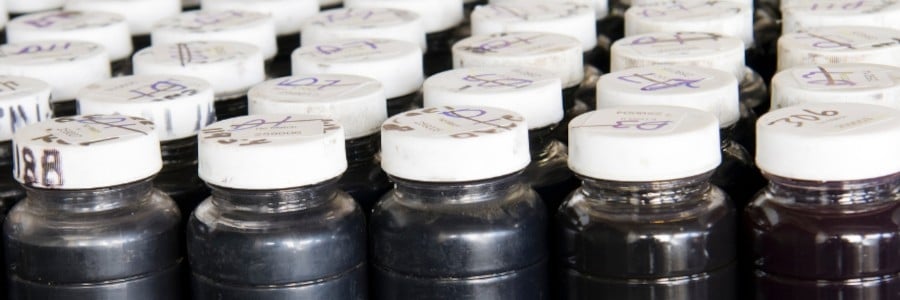The Importance of Taking a Data-Rich Oil Sample for Analysis

How clean is your oil? How clean should it be? Without accurate analysis, the full value of your lubrication initiatives can be considered lost. Successful oil analysis depends on a data-rich sample. An improperly taken fluid sample can skew results, producing either costly false negatives missing possible catastrophic failure, or a false positive resulting in tying up an expert technician doing unnecessary maintenance.
A small 2 oz (60 mL) sample needs to represent the full tank. On a 150-gallon (600 liters) reservoir, that 2 oz sample is a ratio of 10,000:1. You won’t be able to detect hidden wear patterns or conditions without the benefit of trendable samples. Sampling location and method matter. A sample coming straight from the drain port can contain stagnant bottom sediment, debris, and particles in various concentrations that are usually not representative of the whole lubricant. Drop tube vacuum sampling can also be helpful, but often distorts particle concentrations depending on how much the plastic tube twists and where it ends up. These two methods require that the equipment be shut down to safely sample. Opening the system, in most environments, will send more airborne particulate into the fluid – reducing cleanliness and making interpretation more difficult. A world-class oil analysis program starts with good practices and procedures to extract the most representative oil sample. Having a sample taken from the same spot each time – requiring little technique – can establish a pattern that can help place the health of that piece of equipment alongside other pieces of equipment. Sampling valves often allow you to take the precision sample in less than a minute depending on the application. Valve installation, if not already installed as an option on new equipment, can be as little as 10-15 minutes. Sampling valves and accessories are now available for most lubricated systems including engine, transmission, hydraulic, compressors, coolant and gearbox systems. This allows fluid samples to go directly to a vacuum-charged bottle without threading or unthreading the lid, giving users an extra clean, extra quick fluid sample. Samples have often been considered a luxury, but now with maintenance resources and lubricants in short supply, best practice sampling becomes a necessity. Checkfluid sampling valves will let you draw representative and repeatable samples in record time, sample after sample, year after year. Contact Checkfluid today to get the full value of your fluid analysis program and an amazing return from your lubricant budget.